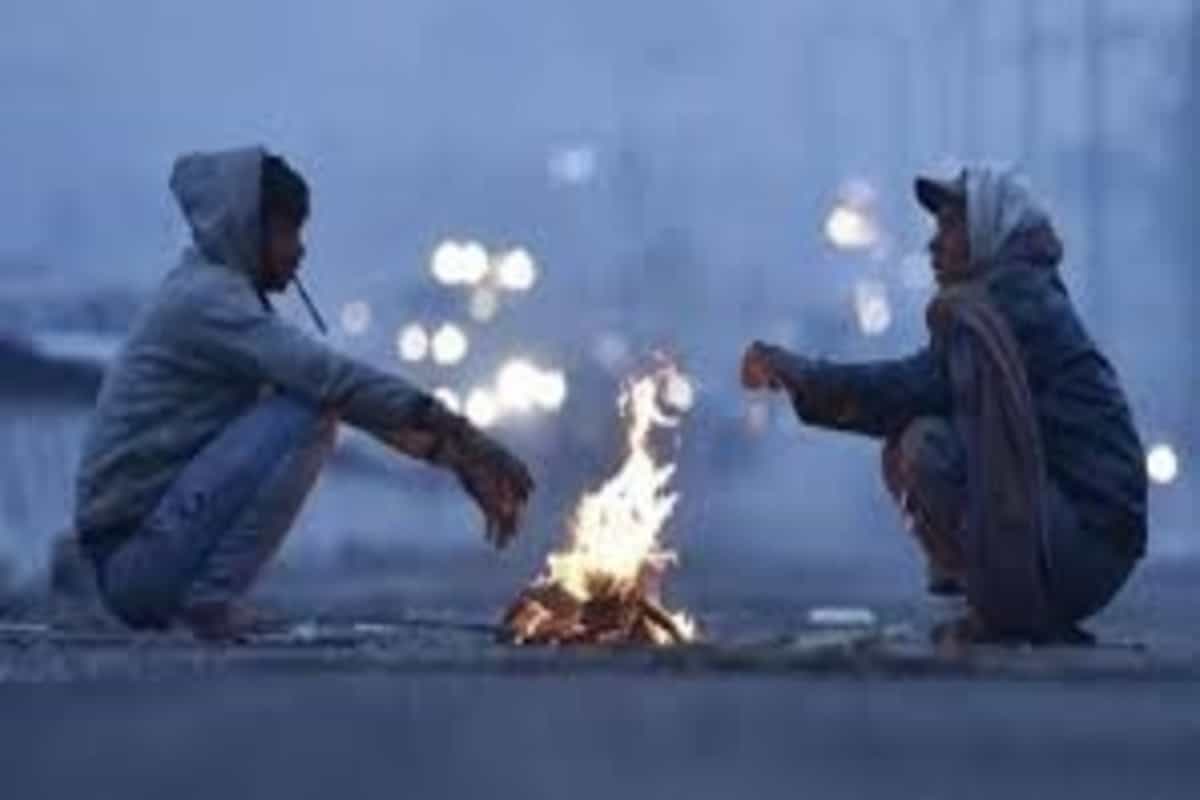The metropolis on Sunday recorded the coldest morning of the season, the minimum temperature falling to three.4 degrees Celsius. The Republic of India meteoric Department (IMD) forecast aforesaid that the temperature would possibly rise marginally on weekday before it dipping once more.
On Sunday, the minimum temperature recorded at the Safdarjung observatory, that is taken into account the official marker for urban center, was 3.4 degrees Celsius, 5 notches below the season’s traditional, creating it the bottom recording this season up to now. the most temperature of the day was twenty two.4 degrees Celsius.
Scientists aforesaid that thanks to a reasonably sensible wind speed, that cleared the fog and unbroken the sky clear, the day time temperature rose. The Palam observatory recorded a minimum temperature of six degrees Celsius, whereas at the Lodi Road observatory, the temperature fell to three.3 degrees Celsius.
The metropolis on Sunday recorded the coldest morning of the season, the minimum temperature falling to three.4 degrees Celsius. The Republic of India meteoric Department (IMD) forecast aforesaid that the temperature would possibly rise marginally on weekday before it dipping once more.
On Sunday, the minimum temperature recorded at the Safdarjung observatory, that is taken into account the official marker for urban center, was 3.4 degrees Celsius, 5 notches below the season’s traditional, creating it the bottom recording this season up to now. the most temperature of the day was twenty two.4 degrees Celsius.
Scientists aforesaid that thanks to a reasonably sensible wind speed, that cleared the fog and unbroken the sky clear, the day time temperature rose. The Palam observatory recorded a minimum temperature of six degrees Celsius, whereas at the Lodi Road observatory, the temperature fell to three.3 degrees Celsius.
On Sabbatum, the minimum temperature at Safdarjung had been recorded at three.9 degrees Celsius.
Kuldeep Srivastava, head of IMD’s regional forecasting centre, aforesaid that the cold winds from Jammu Cashmere, Himachal Pradesh, Uttarakhand and Ladakh were coming back into the metropolis, that had been keeping the temperature low.
“From these days (Sunday) evening, a western disturbance can impact the hills and its have an effect on on urban center can increase the minimum temperature of town by one or 2 degrees on weekday,” Srivastava aforesaid.
This relief, however, are temporary, he said.
“From Tues once more, the minimum temperature can begin to dip. it’s additionally doable that it falls to around three degrees Celsius,” he added.
Dense fog cowl within the early hours of Sunday additionally crystal rectifier to a deterioration of air quality, that slipped from ‘poor’ to ‘very poor’ class. Central Pollution panel (CPCB) knowledge shows that the air quality index (AQI) on Sunday was 321, classified as ‘very poor’. On Sabbatum the AQI was 290 within the ‘poor’ zone.
The IMD has forecast that thanks to the western disturbance, albeit there’ll be no downfall in urban center or encompassing areas, it’ll cause a spike within the wet levels. This would possibly successively cause a rise in pollution levels on.
Union ministry of earth science’ air quality watching centre, System of Air Quality and forecasting and analysis (Safar), aforesaid the cold day conditions might intensify within the urban center region and surface winds square measure probably to weigh down.
“The current higher dispersion conditions square measure probably to decrease. Hence, AQI is forecasted to deteriorate to middle finish of terribly poor class on December twenty one, and additional deteriorate to the upper finish of terribly poor on December twenty two, before falling additional on December twenty three,” the Saphar analysis aforesaid.Kuldeep Srivastava, head of IMD’s regional forecasting centre, aforesaid that the cold winds from Jammu Cashmere, Himachal Pradesh, Uttarakhand and Ladakh were coming back into the metropolis, that had been keeping the temperature low.
“From these days (Sunday) evening, a western disturbance can impact the hills and its have an effect on on urban center can increase the minimum temperature of town by one or 2 degrees on weekday,” Srivastava aforesaid.
This relief, however, are temporary, he said.
“From Tues once more, the minimum temperature can begin to dip. it’s additionally doable that it falls to around three degrees Celsius,” he added.
Dense fog cowl within the early hours of Sunday additionally crystal rectifier to a deterioration of air quality, that slipped from ‘poor’ to ‘very poor’ class. Central Pollution panel (CPCB) knowledge shows that the air quality index (AQI) on Sunday was 321, classified as ‘very poor’. On Sabbatum the AQI was 290 within the ‘poor’ zone.
The IMD has forecast that thanks to the western disturbance, albeit there’ll be no downfall in urban center or encompassing areas, it’ll cause a spike within the wet levels. This would possibly successively cause a rise in pollution levels on.
Union ministry of earth science’ air quality watching centre, System of Air Quality and forecasting and analysis (Safar), aforesaid the cold day conditions might intensify within the urban center region and surface winds square measure probably to weigh down.
“The current higher dispersion conditions square measure probably to decrease. Hence, AQI is forecasted to deteriorate to middle finish of terribly poor class on December twenty one, and additional deteriorate to the upper finish of terribly poor on December twenty two, before falling additional on December twenty three,” the Saphar analysis aforesaid.





